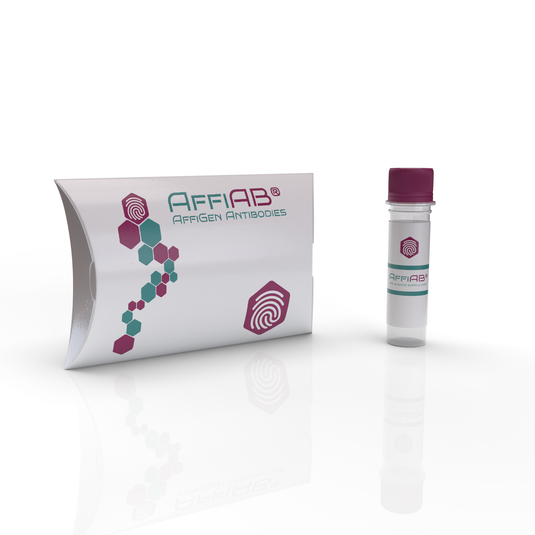AffiAB® Goat Anti-Rab1 Polyclonal IgG Antibody is a reliable solution for researchers looking to accurately detect and quantify the Rab1 protein with Western Blot. AffiAB® antibodies have been rigorously tested to ensure high specificity and sensitivity.
The AffiAB® Goat Anti-Rab1 Polyclonal IgG Antibody is an antibody specifically designed to target and bind to the Rab1 protein. Rab1 is a small GTPase belonging to the Rab family of proteins, which are involved in regulating vesicle trafficking and membrane fusion events within cells.
This polyclonal antibody is generated by immunizing goats with purified Rab1 protein or a specific peptide sequence derived from Rab1. The resulting antibodies are then purified from goat serum to ensure high specificity and quality.
The AffiAB® Goat Anti-Rab1 Polyclonal IgG Antibody is commonly used in research applications to study the expression, localization, and function of Rab1 in various cellular processes. By detecting and visualizing Rab1, researchers can investigate its role in intracellular trafficking, organelle morphology, and protein transport.
Researchers often employ techniques such as immunoblotting, immunohistochemistry, immunofluorescence, and immunoprecipitation to analyze Rab1 protein expression and characterize its functions. The antibody's specificity ensures reliable and accurate detection of Rab1, enabling researchers to explore its involvement in vesicular transport pathways and its impact on cellular homeostasis.
It is important to note that the AffiAB® Goat Anti-Rab1 Polyclonal IgG Antibody specifically recognizes Rab1 and may not cross-react with other Rab proteins or related molecules. Validation experiments and appropriate controls should be performed to ensure the antibody's performance and specificity in the specific experimental conditions.
In summary, the AffiAB® Goat Anti-Rab1 Polyclonal IgG Antibody is a valuable tool for studying the expression, localization, and function of the Rab1 protein. By targeting Rab1, researchers can gain insights into its role in vesicular trafficking and cellular processes, contributing to our understanding of intracellular dynamics and disease mechanisms.

